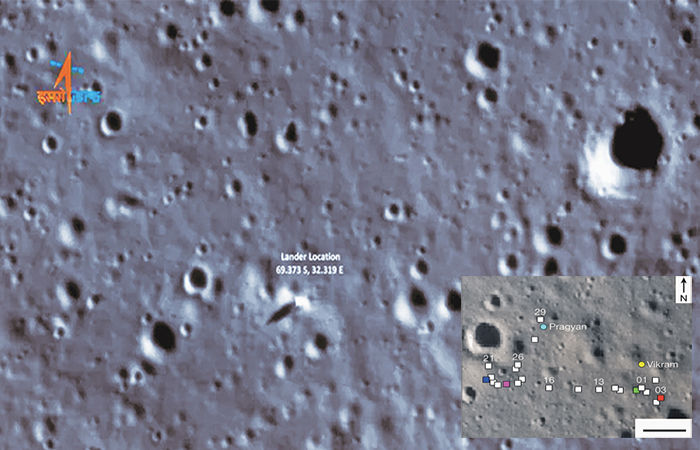
Mumbai: The Pragyan Rover of India's Chandrayaan-3 spacecraft has made another important discovery about the Moon. The research is that 4.5 billion years ago, a magma ocean existed on the surface of the Moon.
Pragyan Rover attached to Chandrayaan-3 spacecraft's Vikram Lander has proved with solid evidence through its exploratory studies that yes, 4.5 billion years ago, the amount of magma on the surface of the moon was very high. Pragyan Rover has also given accurate proof of this.
Dr. Vijnani of Indian Space Research Organization (ISRO) Physical Research Laboratory (PRL-Ahmedabad) and Santosh Vadavale have also presented a research paper on this important research. This research paper has also been published in the international journal Nature.
Dr. Santosh Vadavale told that Chandrayaan-3's Vikram Lander successfully landed safely near the South Pole of the Moon on 23 August 2023. Pragyan Rover (a small-sized rover) was also attached to the same Vikram Lander. This Pragyan Rover traveled around the South Pole of the Moon for a total of 10 days and explored a total of 23 places. During this research, a scientific instrument called Alpha Particle X-ray Spectrometer installed in the Pragyan Rover has also collected samples of magma. Scientific analysis of this sample has also been done. The analysis also revealed that the samples from 23 places contained the same elements as the magma ocean. Yes, there was indeed a magma ocean on the surface of the Moon in the past.
Thus, the molten moon theory or lunar magma ocean theory is known. Based on this theory, the birth of this only satellite of the Earth and its phased development have been known. However, since Chandrayaan-3's Prajna Rover has given strong evidence of this theory, more extensive research can be done about the Moon. The Prajna Rover has also found strong evidence that when the Earth was born from the Sun 4.5 billion years ago, the temperature of the Earth was extremely unbearable. At that stage, a huge celestial body collided with the Earth at a very high speed. Due to that fierce collision, a small part of the Earth got separated and started revolving around the Earth. The small part that got separated from the Earth is today's moon. That is, the age of the Earth is 4.5 billion years, while the age of the Moon has been estimated to be 4.3 billion years.
Dr Narendra Bhandari, a member of the team that studied the lunar rocks brought by the National Aeronautics and Space Administration (NASA) Apollo-11 spacecraft and a member of the technical advisory committee of Chandrayaan-1-2, informed Gujarat News that astronomers know that there is magma, i.e., extremely hot liquid, beneath the surface of the moon. However, now that the Pragyan rover of the Chandrayaan-3 spacecraft has provided concrete evidence of magma, its importance has increased. Now, based on this evidence, astronomers of the world will be able to do in-depth research on the process of the moon from its birth to its development. That is, accurate information will be available about what actually happened during this process.
At present, the elements of aluminum and calcium are present in the upper part of the surface of the moon, while the lower part of the surface has basalt rock (black-hard rock). It has also been proved that the amount of magnesium element is very high in the mantle rock, and now the same magnesium is coming from the lower part of the moon to the upper surface.
Professor Mayank Vahia, senior astronomer (retired) at the Tata Institute of Fundamental Research (TIFR-Mumbai), told Gujarat News that the Moon cooled down over time after it left the Earth. At this stage, heavy elements like magnesium slid down from the surface of the Moon, while lighter elements like iron and calcium continued to fall down from its surface.
Now that the Prajna rover has provided accurate evidence of the presence of magnesium elements from the area near the south pole of the moon, we will get very useful information about how this process is actually taking place in the entire region of the moon. Also, getting concrete evidence of this for the first time also increases its importance.
One special thing. According to a theory, the giant galaxy that collided with Earth 4.5 billion years ago must have come from the giant asteroid belt between Mars and Jupiter. Due to that unexpected collision, a part of the Earth got separated. This separated part is Nishith (Sanskrit name of the Moon). This means that the Moon has every possibility of having elements and characteristics of two planets, Earth and Mars.
 look news india
look news india